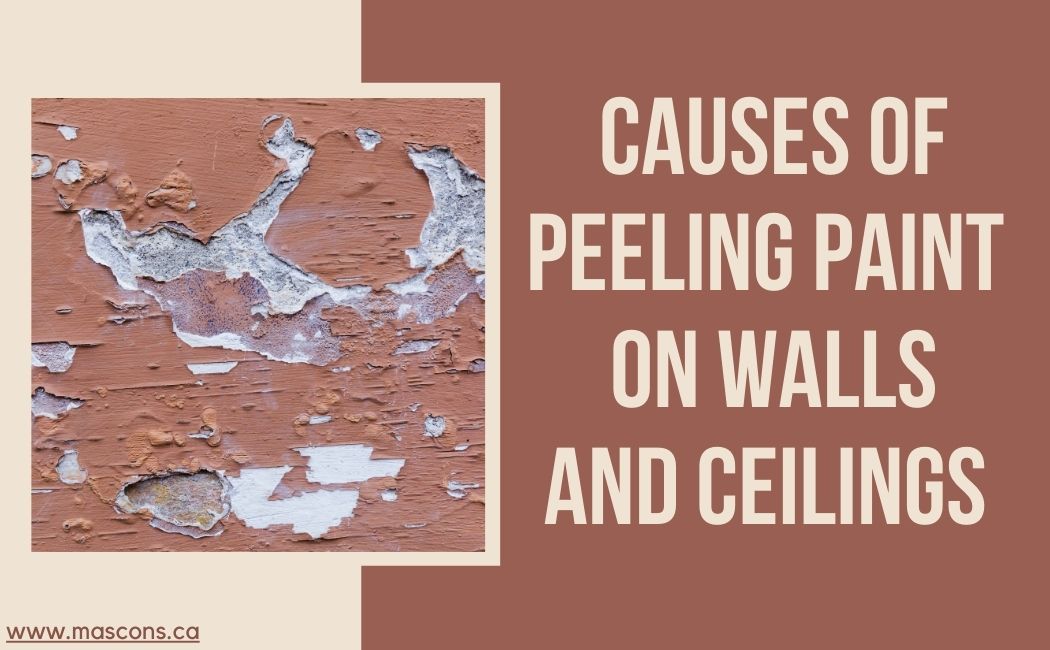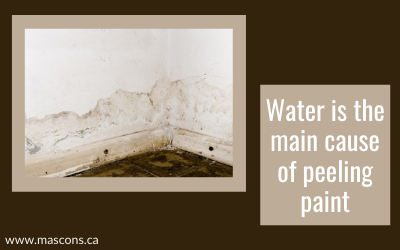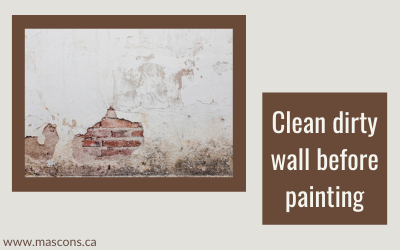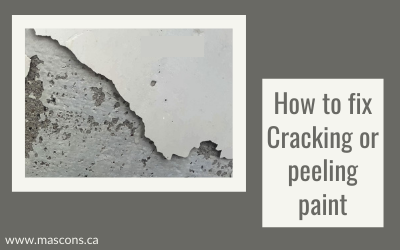Causes of Peeling Paint On Walls and Ceilings by House Painter

Chipping paint drastically reduces the durability of a building. It can turn a beautiful house into a rotten structure, a clean bathroom into an unsanitary mess.
And, if the peeling occurs on interior walls or the ceiling, it can even cause health problems for the occupants; Falling paint chips/peel paint can be harmful if they land in your eyes.
It is common on drywall and old plastered ceilings, but bathrooms, wood decks, crown moulding, siding, and window frames can also be affected by this problem.
In this article, the house painter Explains the Causes of Peeling Paint on Walls and Ceilings.
According to house painter – why is paint peeling?
Paint peels or blisters happen when there is a loss of adhesion between the paint and the surface it is placed on
Lack of adhesion can be caused by many reasons. Here are some common causes of Chipping paint, peeling paint, or bubble formation:
- Exposed to water
- High humidity and excessive condensation
- Unprepared surface
- The surface was dirty before painting
- High temperatures and intense sunlight
- The paint used was incompatible with the surface material
- There are too many coats of paint on the wall or ceiling
- The surface has been painted with poor quality paints
- Exposed to corrosive substances
- How to fix cracking or peeling paint by a house painter
- The paint coat is too old
Exposed to water

Water is the main cause of peeling paint on bathroom walls and ceilings, as well as exterior walls according to the painter in Toronto.
When water penetrates through the layers of paint, the layers separate and pull away from the surface. This results in the paint peeling off.
Water can come from a leaking roof, gutter, flashing, or soffit. It can also be the result of a permeable wall allowing water to enter the interior surface, or even water splashing down the toilet.
High humidity and excessive condensation
In poorly ventilated buildings, these two factors are the main causes of peel paint/paint peeling.
High humidity causes moisture, which leads to the bulging of coatings. The result is cracked and chipped layers of paint.
On the other hand, condensation leads to humidity, an environment that promotes the growth of mold and mildew. These fungi cause the layers of paint to lift and flake off.
Condensation, which usually occurs during and after a thunderstorm, can also ruin new coats of paint.
Unprepared surface
For a coat of paint to adhere properly, the surface must be properly prepared. For this work, you need to get a professional house painter in Toronto.
Other factors, such as incomplete joint compounds and improperly placed joint strips, can also prevent paint from sticking properly.
The surface was dirty before painting

Paints do not stick to dirty surfaces. Dirt, grease, and oil prevent paints from adhering properly to wood, metal, and even concrete surfaces.
Be sure to wipe down the surface before painting it. Even if you don’t see anything dirty, something as imperceptible to the eye as dust (like that left by freshly sanded drywall) can prevent paint from sticking properly.
High temperatures and intense sunlight
The paint does not adhere well enough to the surface at temperatures above the standard atmospheric range. So the temperature is the biggest cause of paint peeling off. It dries faster.
On the other hand, the intense sunlight makes oil paintings brittle and vulnerable to cracking.
The paint used was incompatible with the surface material
Some surfaces contain substances that react with paints, hampering compatibility. For example, new or poorly hardened woods produce natural oils that prevent effective paint adhesion.
Smooth or shiny surfaces also have compatibility issues with some paints. These types of surfaces are unable to form a mechanical bond with the paint, so the layers applied to them immediately peel off.
Besides, some synthetic polymeric materials can prevent the paint layer from achieving full adhesion.
There are too many coats of paint on the wall or ceiling
If too many coats of paint are applied to a surface, especially the ceiling, the coating becomes heavy and may eventually fall off. If there are no strong adhesive bonds to support the weight of the layers, the paint layer will fall off immediately.
The surface has been painted with poor quality paints
Some brands of paint are really poor in terms of flexibility and grip. Poor quality paints do not dry or stick properly, and they will start to peel after a short period. For example, most paints containing calcimine are not very good. You want to choose a paint that has a lot of pigment, resin (which makes paints stick), and fewer solvents (like water).
How to fix cracking or peeling paint by a house painter

- If the cracking is superficial, remove loose or flaking paint with a squeegee or wire brush, sand the surface to thin the edges, prime exposed areas, then repaint.
- If the cracking has reached the substrate, remove as much paint as possible, by scraping, sanding, blasting, or using a heat gun. Once most of the paint has been removed and the surface is smooth and even, prime, then repaint with quality latex paint.
Exposed to corrosive substances
Many substances can corrode a painted surface. If a corrosive substance comes in contact with a painted surface, it causes the formation of blisters, cracks, and finally the coating to peel.
Corrosive substances usually contain strong acid or base. That’s why you shouldn’t clean the walls in your house with bleach or another strong acidic product – be sure to dilute it so that it doesn’t mar the paint.
The paint coat is too old
Over time, the cohesive bonds of a coat of paint become stronger than the adhesive bonds.
Other paints lose their bond strength and become brittle over time, subjecting them to cracking and chipping. Surfaces should be repainted from time to keep the building and its interior clean and clean.
How often it needs to be repainted depends on the type of surface – for example, wood exteriors should be repainted every 3 to 7 years, while aluminum should be repainted every 5 years.
If you are facing paint peeling problems from walls and ceilings, contact today the local house painter in Toronto – Mas Construction.
